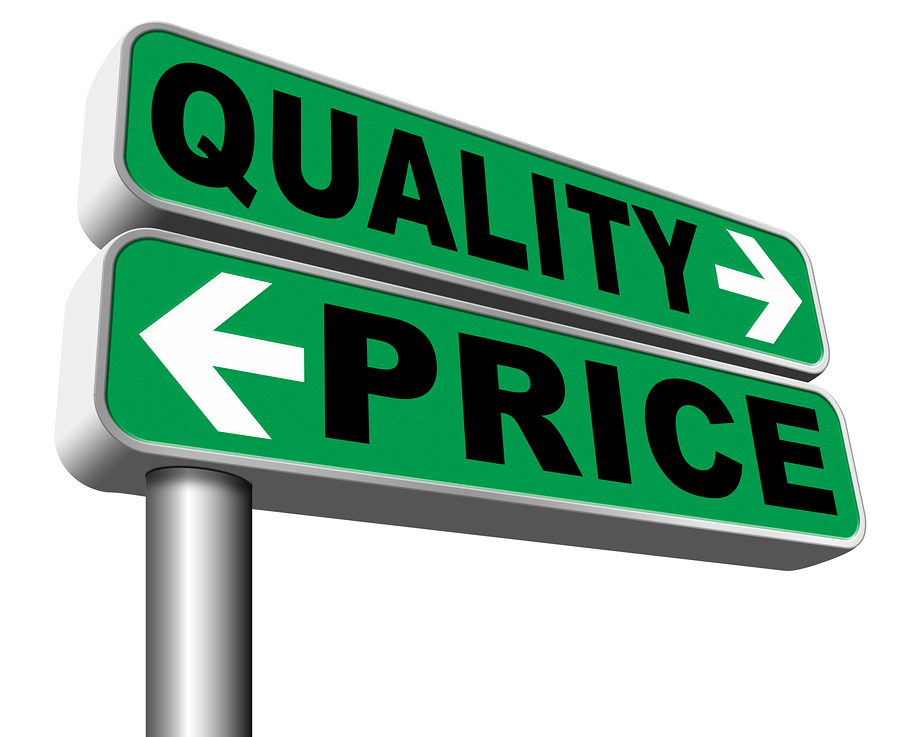James Russell, RN-BC, MBA, Value Analysis Facilitator
VCU Health System, Richmond, VA
Vendors will often make claims on the superiority of their items on the quality front to try to justify the fact that their items cost more than what you’re currently buying. Sometimes they’re even right! It takes a thorough analysis, both before and after a project, to assess the validation of those claims.
Utilization is often touted as the next frontier in value analysis. Utilization, I would submit, has always been a part of a thorough decision-making process regarding the dual goals of increasing quality while decreasing costs. Consider a project at the Virginia Commonwealth University Health System (VCUHS) involving non- sterile exam gloves.
Hypothesis
VCUHS was having the following quality problems associated with the incumbent glove:
1. Staff was experiencing frequent ripping and tearing of gloves when donning, requiring them to use more gloves than necessary to find a pair that met their safety requirements. Often, their fingers would go right through the end of the gloves or the cuff would tear when pulled tight.
2. The incumbent vendor had repackaged their product, compressing the same amount of gloves into a smaller box. This caused the gloves to clump together inside the box, often resulting in several coming out of the box when only one was pulled. Worse yet, gloves frequently fell on the floor and were thrown away.
By purchasing a higher quality exam glove, packed in larger box, VCUHS would alleviate both quality issues above, resulting in a decrease in the number of exam gloves used per patient encounter. This would improve customer satisfaction with the product (clinicians), address safety issues with the product (from the holes), and could potentially decrease the overall costs to the health system (by decreasing usage).
Baseline Data
Two data sets are important in any value analysis project – expense and volume. According to the data in Table 1, the annual expense at VCUHS was $850,000. Since many products are packaged differently from vendor to vendor, reducing the costs to “each” price is often helpful. In this project, one glove costs $0.04336, or a little over four cents. Doing the division, you can determine the volume used annually, 19.6 million gloves.
An additional piece of data, not required in all projects, is a normalizing factor. In some cases, that could be patient days (a common statistic to all hospitals), or it may be device days (a statistic frequently used to determine infection rates). In the exam glove project, since the items were used both inside the hospital and out in the clinics, the normalizing factor was Equivalent Patient Days (EPD’s) – 204,000. This is determined by multiplying the inpatient days by an outpatient factor based on clinic visits, to account for all gloves used system-wide. This statistic is also referred to as Adjusted Patient Days. Normalizing the data this way enables you to eliminate the effect of fluctuations in the number of patient encounters (census).
Lastly, by dividing again you arrive at the volume of gloves per EPD, or 96.07. This means that during an average patient experience at the health system, 96 exam gloves would be used.
Table 1: Normalizing Factor Examination Gloves
|
Non-Sterile Exam Gloves |
Annual Spend |
Average “Each” Price |
Annual “Each” Volume |
Annual Equivalent Patient Days |
Volume / EPD |
|
12 months prior to project |
$850,000 |
$0.04336 |
19,600,000 |
204,000 |
96.07 |
After analyzing the baseline data, several vendors were chosen to participate in the initial process of searching for a higher quality exam glove. Many of these vendors came from the contractual participants offered by VCUHS’ GPO. Each vendor was required to provide quality data on their product. This included things like fingertip and palm thickness, cuff length, and quantity of gloves per box.
Project Steps
An important factor was called “Breakthrough Time.” The exam gloves needed to be tested against certain medications, like chemotherapy, to determine how long a clinician could wear the gloves and be safely protected from the medication coming through the glove. While the exam gloves were not designed to meet all chemotherapy requirements, it is an important method of gauging the level of testing a manufacturer has invested in their product.
After analyzing the data, clinical evaluations were performed by hundreds of clinical staff, assessing issues such as:
· Fingertip sensitivity during venipunctures for blood draws and peripheral IV starts.
· Comfort level, after prolonged wearing.
· Number of allergic reactions to each brand.
· Whether the gloves tore when donned (fingers or cuffs).
· Whether more gloves than needed came out of the box when one was pulled.
After analyzing the clinical evaluation results, a vendor was chosen and the conversion was made.
Outcome
After the conversion to the new glove, periodic assessments were performed to determine that the expected quality improvements materialized. Sometimes, a product can perform differently in an evaluation than it does after it becomes the incumbent. In this case, the staff reported the clumping issue related to smaller boxes was eliminated. They also reported a significant decrease in the episodes of ripping and tearing while donning. Allergic reactions to the gloves were unchanged from the previous glove.
A year later, the data was compelling when compared to the baseline. As shown in Table 2, the number used had decreased, despite an increase in the patient census (EPD’s). After normalizing, VCUHS was using about 10 fewer exam gloves per patient encounter with the new vendor, amounting to more than 1 million fewer gloves used per year. This decrease in utilization accounted for a decrease in overall spend, despite an increase in the cost per glove and the increase in census. Not only did the number of gloves used per EPD decrease by over 10%, the annual health system expense decreased by $35,000.
Table II: Comparison of Examination Glove Study Before/After Results
|
Non-Sterile Exam Gloves |
Annual Spend |
Average “Each” Price |
Annual “Each” Volume |
Annual Equivalent Patient Days |
Volume / EPD |
|
12 months prior to project |
$850,000 |
$0.04336 |
19,600,000 |
204,000 |
96.07 |
|
12 months after project |
$815,000 |
$0.04406 |
18,500,000 |
216,000 |
85.65 |
|
Utilization Return On Investment Formulas |
Old spend – New spend = Cost Savings |
||||
|
$850,000 – $815,000 = $35,000 |
|||||
|
(Old Volume / EPD – New Vol. / EPD) / Old Vol. / EPD = % changed |
|||||
|
(96.07 – 85.65) / 96.07 = 10.8% (utilization decrease) |
|||||
SummaryAll elements of the project hypothesis have been satisfied. The number of gloves utilized did indeed decrease as a result of converting to a higher quality glove. This decrease in utilization also resulted in an annual cost savings, despite buying a more expensive glove.
In a project such as the one described above, a good value analysis professional must look at more elements than cost alone. The cost of an item will never be ignored and must always be part of a thorough project analysis, but assessing changes in utilization can lead to some very interesting conclusions about “getting what you pay for.”
Jim Russell is a Value Analysis Facilitator for Virginia Commonwealth University Health System and has more than 25 years of nursing experience, specializing in critical care and psychiatry. He's been a Staff Nurse, Charge Nurse, Clinical Coordinator, Nurse Manager, Director, and Chief Nursing Officer. He worked for many years in the for-profit community healthcare sector and also has several Academic Medical Centers on his resume. Jim sat for 5 years on the Nursing Advisory Board for a HealthTrust, performing Value Analysis for nursing related products and represented more than 70 hospitals. He is currently on several Advisory Councils and Special Interest Groups for UHC and Novation. When not at work, he can be found rolling around with his hyperactive rescue Husky. You can contact Russell with your questions or comments at jrussell2@mcvh-vcu.edu.
Listen to the Special Extended Audio Podcast of James Russell and Managing Editor Bob Yokl





